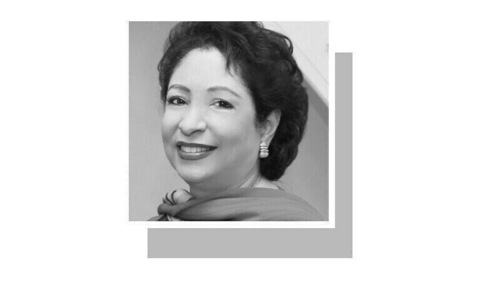Yes, this is true. In fact, sometimes these Faizian progressive patches are so alien to the romantic ethos of the poem to which they are coercively appended that they are easily caught. This is a blessing of sorts, for then one can separate them, even though it is an offense for the reader to emend or copyedit any poet. But one might be tempted to commit this offense in the case of a poet so beloved, so gentle, so cultured. At the same time, the matter is way more complex, hiding underneath many ironies.
One of the most well-known of Faiz’s poems, ‘Subh-e-Azadi, August 1947’ (Freedom’s Dawn), is a case in point. The title of the poem speaks of, and speaks to, a monumental and fateful down-to-earth political reality, a concrete historical event that brought much misery, bloodshed, dislocations, and dispossessions — and yet the poem remains on the symbolic and metaphorical plane, never melting into or devoured by the mono-layered depiction of crude realities; no talk here of socialist revolution, of puss or of putrid blood. It is for this very reason, for this very virtue, that Sardar Jafri, a comrade, rejected this poem altogether; it has failed, he judged, since it did not speak directly of a Marxist revolution. It was politically immature, was the charge.
In one of his ghazals, Faiz Sahib said,

Notorious is love, while lying in the heart, unspoken … Coming into expression on the lips, it’s a mystery!
Here he has made a profound point that is part of the essence not only of his poetry, but of all great poetry. Once an idea, an emotion, or a feeling is rendered into poetic expression, it veils itself in a translucent wrap of ambiguities — in other words, it begins to admit of a multiplicity of meanings. And here we come to one of the defining features of Faiz’s poetry — that more often than not he transmutes political realities into symbolic expressions, bestowing upon them layers after layers of allusions, associations, and meanings, without localising them or identifying them. This is typical Faiz. He is that unique craftsman in the whole history of the Urdu poetic tradition who victoriously appropriates classical metaphors to express some real pain, such that we cannot tell in any definitive manner which pain he is talking about, or which event he is referring to, or which specific community he has in mind. Once words express “the manner of [his] pity-wanting pain,” they become enriched like a mystery — we will forever keep trying to unravel that mystery.
And this is Faiz’s romance of the metaphorical with the real. Recall ‘Shorish-e Barbat-o-Nai’ (The Clamour of Lyre and Flute). This poem is at once massively political and massively romantic. Here the poet does not break his chain and locks — that would be an act of activism — rather, he teaches them “the swelling music of lyre and flute” — and this embodies sheer poetic craft.
Faiz has tamed political language to turn into a kaleidoscope of meanings in symbolism, symbolism riding on a restless aesthetic wave, what of rhythm here and what of balance and what of imagery:

Let us two teach all locks and fetters the swelling music of lyre and flute, Music to strike the imperial drum of Caesar or Kai-khosru mute!
Ironically, again, many of Faiz’s “prison poems,” while carrying titles that sound so grossly activist, have no activism, no discernible politics in them. They operate fully in a romantic realm, like pearls strung together in lofty ghazalesque metaphors, radiating forth a galaxy of meanings. Think of ‘Zindan ki Ek Sham’ (A Prison Nightfall) or ‘Zindan ki Ek Subh’ (A Prison Daybreak). Then we have another masterpiece, ‘Daricha’ (The Window). In the manner of an alchemist, how skillfully political facts are made to transcend their factuality. Faiz does not cry over the killing of people — no, he cries over the massacre of poetic symbols:

On one cross, they sacrifice the heaven’s spring cloud, On one they murder the bright moon, On one they tear asunder the trance-filled grove. And on another they put to death the morning breeze.
And then what about ‘Black Out’ or ‘Heart-Attack’ or Naqsh-e-Faryadi’s ‘Tanhai’ (Solitude)? Are they political poems or romantic expressions? Is it activism dressed in sublimity or art? There is ambiguity here, and that is the crux of the matter. One wishes that Faiz Sahib had not succumbed to the pressures of his progressive mentors, as he did every now and then. But is that typical Faiz?


February 13th is Faiz Ahmed Faiz’s birth anniversary. The author has benefitted from Victor Kiernan’s translations.



















































